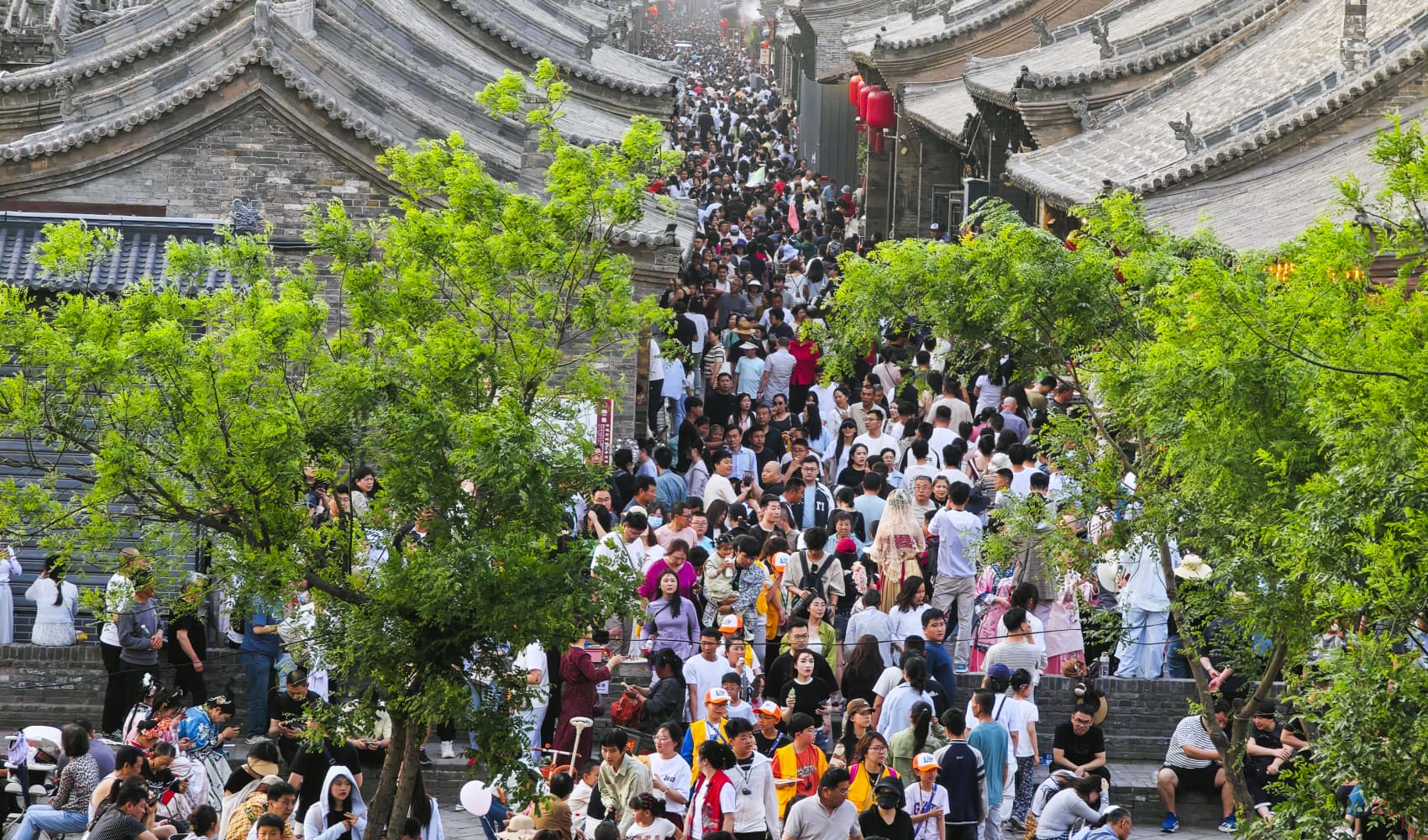China Tourism Surge: Why Travel Defies Economic Slowdown
China's Tourism Boom: Why Travel Soars Despite Economic Headwinds
Decoding China's Travel Phenomenon: More Than Meets the Eye
China's economic narrative is a complex tapestry, woven with threads of impressive growth and whispers of potential slowdowns. But one vibrant thread shines brighter than ever: tourism. As CNBC's "The China Connection" newsletter recently highlighted, domestic tourism is experiencing a remarkable surge, defying concerns about overall consumer spending. Think of it as a flock of birds taking flight, seemingly unaffected by the changing winds below. Let's dive into what's fueling this phenomenon.
The May Labor Day Bonanza: Numbers Don't Lie
The sheer scale of the tourism boom is staggering. During the May Labor Day holiday, China reported a whopping 314 million domestic tourist trips. That's not just a slight increase; it's a massive leap from the 195 million trips recorded in 2019, before the world turned upside down. Imagine the logistical feat of accommodating that many travelers! It's like moving the population of several countries within a single nation.
Why Now? Unraveling the Drivers of the Tourism Surge
Rediscovering Roots: The Allure of History and Culture
One key driver is a growing interest in history and culture. Forget fleeting trends; this is about rediscovering a national identity. People are flocking to historical sites, museums, and cultural landmarks, seeking a deeper connection to their heritage. It's as if the nation is on a quest to revisit its roots and understand its story better.
Seamless Journeys: The Power of Enhanced Transportation
Ease of transportation plays a crucial role. China's infrastructure has undergone a massive transformation in recent years, with high-speed rail networks and improved air connectivity making travel easier and more accessible. No longer are remote destinations out of reach. Modern transportation has shrunk the country, making exploration a breeze.
Consumer Sentiment: Where Are the Wallets Opening?
Travel Takes the Crown: Prioritizing Experiences Over Things
According to a TD Cowen survey of 2,000 Chinese consumers, travel topped the list of spending priorities, followed by groceries. This signals a shift in consumer behavior, with people prioritizing experiences over material possessions. It's the difference between buying another gadget and creating memories that last a lifetime.
Groceries? More Than Just Essentials
The fact that groceries are high on the list too, indicates that Chinese consumers still want to experience new tastes and culinary traditions. This can be both dining out or seeking out exotic ingredients to try at home.
The Bigger Picture: Is This Sustainable?
Short-Term Boost or Long-Term Trend?
The question on everyone's mind is whether this tourism surge is a temporary blip or a sustainable trend. While the economic outlook remains uncertain, the strong demand for travel suggests a fundamental shift in consumer priorities. If you are looking to capitalize on the travel trend, now is the time!
Economic Impact: Beyond the Headlines
The tourism sector's resurgence has a ripple effect throughout the economy, boosting hotels, restaurants, transportation services, and local businesses. It is a powerful engine for job creation and economic growth. These travel dollars provide the foundation for more stable economic growth.
Challenges Ahead: Navigating the Bumps in the Road
Capacity Constraints: Can Infrastructure Keep Up?
The sheer volume of travelers poses challenges for infrastructure and services. Can airports, train stations, and hotels keep up with the increasing demand? Overcrowding and long queues can diminish the travel experience. Scaling the infrastructure to meet the need of travellers will be key to continued success.
Quality Control: Ensuring a Positive Experience
Maintaining quality standards is crucial. As tourism grows, it's essential to ensure that hotels, restaurants, and tour operators provide high-quality services and experiences. Disgruntled tourists can quickly tarnish a destination's reputation. Positive reviews and word of mouth will be essential to keeping a destination in people's travel plans.
How Businesses Can Capitalize on the Tourism Boom
Targeting the Domestic Traveler: Know Your Audience
Businesses need to understand the needs and preferences of domestic tourists. What are they looking for in a travel experience? What are their priorities? Tailoring products and services to meet their expectations is essential for success. The more customized and personalized you make your offering, the more demand it will garner.
Leveraging Digital Platforms: Reach Your Audience Online
Digital marketing is key. Businesses should leverage social media, online travel agencies, and other digital platforms to reach potential customers and promote their offerings. Engaging content and targeted advertising can drive bookings and increase brand awareness. Consider offering discounts or promotions to incentivize purchases.
Beyond the Obvious: Niche Tourism Trends
Health and Wellness Retreats: Combining Travel with Wellbeing
Health and wellness retreats are gaining popularity, combining travel with opportunities for relaxation, rejuvenation, and self-care. These retreats offer a chance to escape the stresses of daily life and focus on physical and mental wellbeing. These retreats are particularly attractive to an older and more affluent demographic.
Adventure Tourism: Thrills and Spills in the Great Outdoors
Adventure tourism is another growing trend, with travelers seeking adrenaline-pumping experiences such as hiking, climbing, and water sports. China's diverse landscapes offer ample opportunities for adventure seekers. Consider partnering with experienced guides and tour operators to offer packaged experiences.
The Global Impact: What Does This Mean for International Travel?
Increased Outbound Travel: A Matter of Time?
While domestic tourism is booming, international travel is still recovering. As travel restrictions ease and confidence returns, we can expect to see a surge in outbound travel from China. This will have a significant impact on tourism destinations around the world. Countries should be developing strategies to welcome and accommodate Chinese tourists when they eventually arrive.
Shifting Travel Patterns: New Destinations Emerge
The pandemic has reshaped travel patterns, with some destinations becoming more popular while others have lost favor. Businesses need to adapt to these shifting patterns and target emerging markets. It's worth re-evaluating your assumptions about where people want to travel and who will be doing the travelling.
Conclusion: Ride the Wave of China's Tourism Resurgence
China's tourism surge is a powerful testament to the resilience and adaptability of the Chinese consumer. Despite economic headwinds, people are prioritizing travel and experiences, driving growth in the tourism sector. For businesses, understanding the drivers of this boom and adapting to changing consumer preferences is key to success. It’s a wave worth riding, but only if you know how to surf!
Frequently Asked Questions
- Why is China's domestic tourism booming despite concerns about the economy?
People are prioritizing experiences and cultural exploration. Even though the economy is uncertain, travel topped the list of things consumers wanted to spend money on.
- What role does transportation play in this tourism surge?
Improved infrastructure, including high-speed rail, has made travel more accessible and convenient, connecting previously remote areas.
- How can businesses capitalize on the tourism boom?
Understand the needs and preferences of domestic tourists, use digital marketing to reach them, and offer niche tourism experiences.
- Is this tourism surge sustainable?
While sustainability remains to be seen, current trends point to a long-term shift in consumer priorities towards experiences. It is still in its early stages and has the potential for more growth.
- What are the potential challenges facing the tourism sector in China?
Infrastructure constraints, quality control issues, and maintaining positive travel experiences are key challenges that need to be addressed. However, it is also a large opportunity to innovate and optimize the process.

